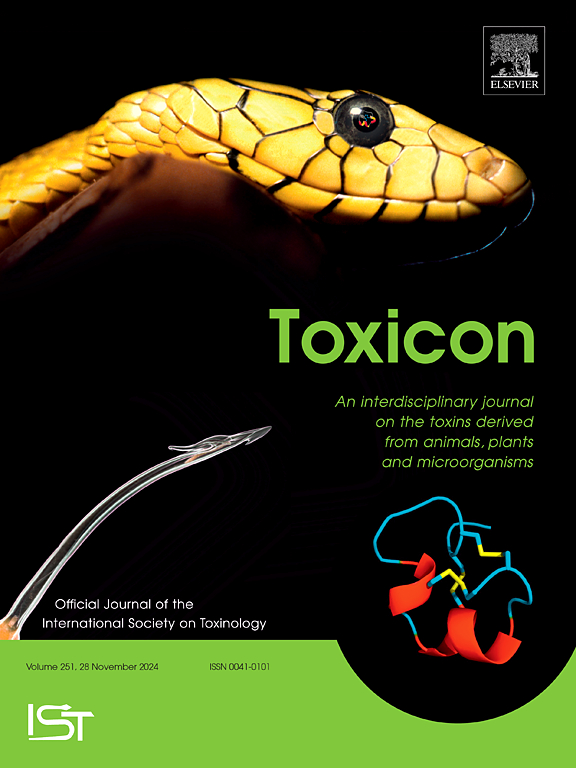A Dendrobium chrysotoxum extract erianin induce AML cells death by activating PPARɑ and downregulating PI3K/AKT signaling pathways
IF 2.6
4区 医学
Q2 PHARMACOLOGY & PHARMACY
引用次数: 0
Abstract
Erianin is a biphenyl compound with low toxicity and a single structure that is extracted from Dendrobium officinale. The wide spectrum of pharmacological properties and excellent toxicity of erianin have been comprehensively proven in multiple tumors. However, less is known about the toxicity of erianin in acute myeloid leukemia (acute myeloid leukemia AML). Here, we explored the anti-AML capacity and potential mechanisms of erianin. Cells proliferation and cytotoxicity of AML cells of erianin was detected by CCK-8 assay and flow cytometer was conducted to assess AML cells apoptosis rate. Erianin blocked the AML cells cycle at the G2/M phase by regulating cell cycle-related protein and P21, P27, and P53 mRNA expression. Additionally, we first filtered PPARɑ and PIK3R1 through network pharmacology, protein–protein interaction (PPI) network, and GO and KEGG pathway enrichment analysis and confirmed their binding with erianin by molecular docking analysis.The cellular thermal shift assay (CETSA) and the drug affinity responsive target stability assay (DARTS) further verified that PPARɑ was an effective target of erianin. Specifically, erianin was found to inhibit the transcriptional level of PIK3R1 by promoting the protein expression of PPARɑ, thereby inhibiting the PI3K/AKT pathway. The inhibitory effect of erianin was partially neutralized by GW6471, a PPARɑ inhibitor. Notably, erianin revealed vigoroso coordinate repression with LY294002 on AML cells. Our findings indicate that erianin showed a potent cytotoxic effect on AML cells and affected AML cells via PPARɑ to regulate PI3K/AKT signaling pathways. We demonstrated the potent anti-AML effects of erianin and reported its potential mechanisms of action, indicating its potential for further development as a novel anti-AML drug.

黄曲石斛提取物erianin通过激活PPAR,下调PI3K/AKT信号通路诱导AML细胞死亡
鸢尾碱是从铁皮石斛中提取的一种低毒性、结构单一的联苯化合物。缬草苷广泛的药理特性和优良的毒性已在多种肿瘤中得到全面证实。然而,关于羊绒线蛋白在急性髓性白血病(acute myeloid leukemia AML)中的毒性知之甚少。在此,我们探讨了erianin的抗aml能力及其潜在机制。CCK-8法检测羊角苷对AML细胞增殖和细胞毒性的影响,流式细胞仪检测AML细胞凋亡率。Erianin通过调节细胞周期相关蛋白和P21、P27、P53 mRNA的表达,在G2/M期阻断AML细胞周期。此外,我们首先通过网络药理学、蛋白蛋白相互作用(PPI)网络、GO和KEGG通路富集分析对PPAR和PIK3R1进行了筛选,并通过分子对接分析证实了它们与羊草蛋白的结合。细胞热移实验(CETSA)和药物亲和反应靶稳定性实验(DARTS)进一步证实PPAR是erianin的有效靶点。具体来说,我们发现羊毛苷通过促进PPAR的蛋白表达来抑制PIK3R1的转录水平,从而抑制PI3K/AKT通路。PPAR抑制剂GW6471部分中和了erianin的抑制作用。值得注意的是,erianin与LY294002协同抑制AML细胞。我们的研究结果表明,缬氨酸对AML细胞具有强大的细胞毒作用,并通过PPAR调控PI3K/AKT信号通路影响AML细胞。我们证明了羊角胺的有效抗aml作用,并报道了其潜在的作用机制,表明其作为一种新型抗aml药物的进一步开发潜力。
本文章由计算机程序翻译,如有差异,请以英文原文为准。
求助全文
约1分钟内获得全文
求助全文
来源期刊

Toxicon
医学-毒理学
CiteScore
4.80
自引率
10.70%
发文量
358
审稿时长
68 days
期刊介绍:
Toxicon has an open access mirror Toxicon: X, sharing the same aims and scope, editorial team, submission system and rigorous peer review. An introductory offer Toxicon: X - full waiver of the Open Access fee.
Toxicon''s "aims and scope" are to publish:
-articles containing the results of original research on problems related to toxins derived from animals, plants and microorganisms
-papers on novel findings related to the chemical, pharmacological, toxicological, and immunological properties of natural toxins
-molecular biological studies of toxins and other genes from poisonous and venomous organisms that advance understanding of the role or function of toxins
-clinical observations on poisoning and envenoming where a new therapeutic principle has been proposed or a decidedly superior clinical result has been obtained.
-material on the use of toxins as tools in studying biological processes and material on subjects related to venom and antivenom problems.
-articles on the translational application of toxins, for example as drugs and insecticides
-epidemiological studies on envenoming or poisoning, so long as they highlight a previously unrecognised medical problem or provide insight into the prevention or medical treatment of envenoming or poisoning. Retrospective surveys of hospital records, especially those lacking species identification, will not be considered for publication. Properly designed prospective community-based surveys are strongly encouraged.
-articles describing well-known activities of venoms, such as antibacterial, anticancer, and analgesic activities of arachnid venoms, without any attempt to define the mechanism of action or purify the active component, will not be considered for publication in Toxicon.
-review articles on problems related to toxinology.
To encourage the exchange of ideas, sections of the journal may be devoted to Short Communications, Letters to the Editor and activities of the affiliated societies.
 求助内容:
求助内容: 应助结果提醒方式:
应助结果提醒方式:


